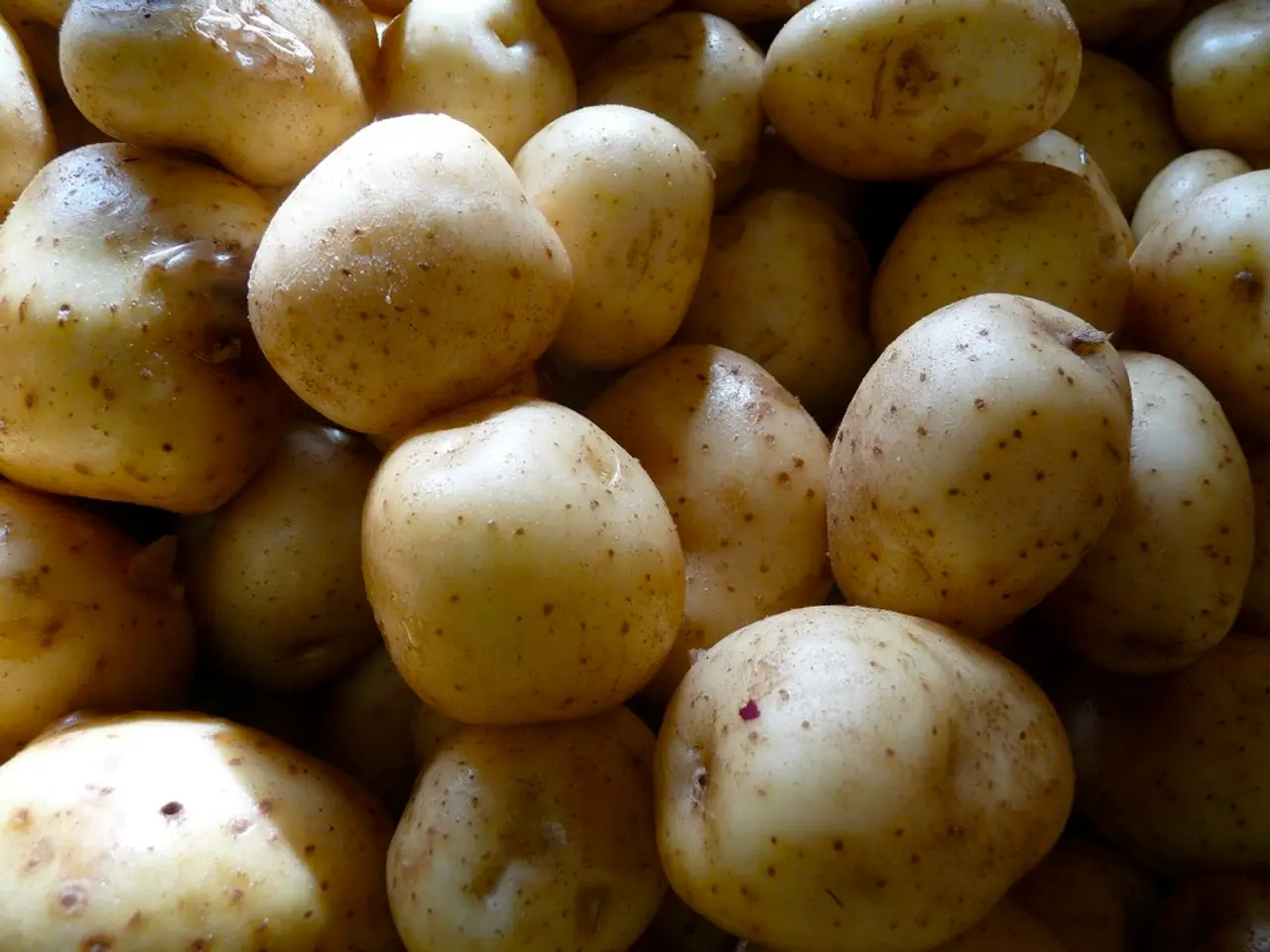Cultivating Sweet Potatoes in Iowa's Soil
In Iowa, sweet potatoes thrive under warm, frost-free conditions with a growing season of around 90 to 120 days. These warm-season crops require well-drained, sandy loam soil with consistent moisture but not waterlogged conditions.
To get started, sweet potato slips should be planted in rows that are 36-48 inches apart, with plant spacing within the row being 12 inches. Before planting, apply 1 to 2 pounds of an all-purpose garden fertilizer per 100 square feet.
Sweet potato plants prefer a soil pH of 6.0 to 7.0. Soil with heavy clay or rocks may result in misshapen sweet potato roots, and soil that does not drain well may lead to lower yields or root rot. Therefore, it's essential to ensure the soil is well-drained and free of large rocks.
Slips should be firm, green, and 8 to 12 inches long, preferably with one or two leaves. These slips should be disease and insect free, and bought from reputable vendors to guarantee healthy growth.
Throughout most of the growing season, ensure even irrigation. However, limit water during the last four weeks before harvest to protect the roots from cracking. Typically, sweet potatoes are harvested in late summer/early fall before soil temperatures drop below 60°F.
Sweet potatoes require curing to heal cuts, bruises, and reduce rots, and convert some of the starch in the roots to sugar. This process involves storing the tubers at 50–60°F with high humidity for two weeks before storage at about 40°F in the dark.
In Iowa, sweet potatoes are grown as a warm-season crop and require protection from early frost. It's recommended to plant sweet potatoes in mid-to-late May or early June after the danger of frost has passed.
Several cultivars are suitable for northern climates, including ‘Beauregard’, ‘Georgia Jet’, and ‘Covington’ due to their relatively shorter maturity periods and good yields in cooler regions.
Compared to yams, true yams are tropical plants native to Africa and Asia that require a longer, hotter growing season and are generally not suited for Iowa’s climate. While the term "yam" is often colloquially used in the U.S. to describe orange-fleshed sweet potatoes, true yams differ significantly in botanical classification, growing conditions, and cultivation. Yams prefer very warm, humid environments and are not typically grown in temperate zones like Iowa. Thus, sweet potatoes are the practical choice for Iowa growers, whereas actual yams cannot be feasibly cultivated outdoors due to climate constraints.
This summary is drawn from regional grower experience and general horticultural recommendations for cold-climate sweet potato cultivation.
- To extend the lifespan of harvested sweet potatoes, they need to be cured by storing them at 50–60°F with high humidity for two weeks, followed by storage at about 40°F in the dark.
- In adding fertilizer to the soil, 1 to 2 pounds of an all-purpose garden fertilizer per 100 square feet is recommended before planting sweet potato slips.
- To avoid misshapen sweet potato roots, ensure that the soil is not heavy with clay or rocks, and it should drain well to prevent root rot and lower yields.
- In the home-and-garden lifestyle, gardening enthusiasts may find success in growing sweet potatoes, which are well-suited to Iowa's climate, particularly during the 90 to 120-day growing season.
- While sweet potatoes and yams are often confused, true yams are tropical plants that require a longer, hotter growing season and are not suitable for Iowa's cooler climates. In the U.S., the term "yam" is commonly used to describe orange-fleshed sweet potatoes, but they belong to different botanical classifications, growing conditions, and cultivation methods.





